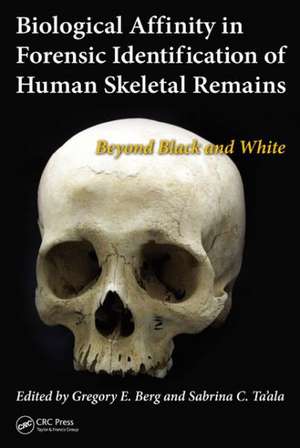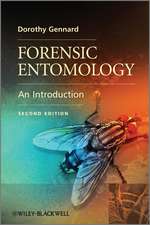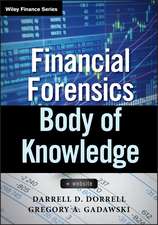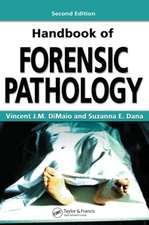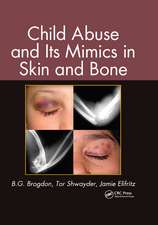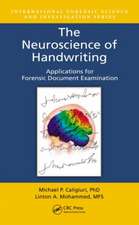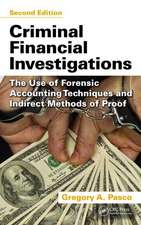Biological Affinity in Forensic Identification of Human Skeletal Remains: Beyond Black and White
Editat de Gregory E. Berg, Sabrina C. Ta'alaen Limba Engleză Hardback – 13 dec 2014
Gathering insight from those who have made recent improvements and scientific advances in the field, the book begins with the historical foundations of the concept of biological affinity and the need for increased research into methods for determining ancestry of skeletal remains. The contributors cover a range of topics, including:
- Ancestry estimation from the skull using morphoscopic and morphometric traits and variables
- Innovative methods from metric analyses of the postcrania, and new approaches to dental non-metric variation
- The biological diversity of Hispanic populations and use of discriminant function analysis and 3D-ID software to determine ancestry
- Methods of age progression and facial reconstructions to create two-dimensional (2D) and three-dimensional (3D) facial composites for missing people
- The preparation of skeletal remains for DNA extraction and sampling, and mtDNA methods that are available for identification of haplogroups (e.g., ancestral populations)
| Toate formatele și edițiile | Preț | Express |
|---|---|---|
| Paperback (1) | 432.40 lei 6-8 săpt. | |
| Taylor & Francis – 31 mar 2021 | 432.40 lei 6-8 săpt. | |
| Hardback (1) | 1121.01 lei 6-8 săpt. | |
| Taylor & Francis – 13 dec 2014 | 1121.01 lei 6-8 săpt. |
Preț: 1121.01 lei
Preț vechi: 1367.09 lei
-18% Nou
Puncte Express: 1682
Preț estimativ în valută:
214.54€ • 222.08$ • 181.33£
214.54€ • 222.08$ • 181.33£
Carte tipărită la comandă
Livrare economică 05-19 martie
Preluare comenzi: 021 569.72.76
Specificații
ISBN-13: 9781439815755
ISBN-10: 1439815755
Pagini: 334
Ilustrații: 200 b/w images
Dimensiuni: 178 x 254 x 25 mm
Greutate: 0.79 kg
Ediția:1
Editura: Taylor & Francis
Colecția CRC Press
Locul publicării:Oxford, United Kingdom
ISBN-10: 1439815755
Pagini: 334
Ilustrații: 200 b/w images
Dimensiuni: 178 x 254 x 25 mm
Greutate: 0.79 kg
Ediția:1
Editura: Taylor & Francis
Colecția CRC Press
Locul publicării:Oxford, United Kingdom
Public țintă
Academic and Professional Practice & DevelopmentCuprins
A Brief History of the Race Concept in Physical Anthropology. Biological Affinity in Medicolegal, Public, and Anthropological Contexts. Cranial Morphoscopic Traits and the Assessment of American Black, American White, and Hispanic Ancestry. Biological Affinity and Sex from the Mandible Utilizing Multiple World Populations. Metric Ancestry Estimation from the Postcranial Skeleton. The Sagittal Suture as an Indicator of Race and Sex. Beyond the Cranium: Ancestry Estimation from the Lower Limb. Population Affinities of Hispanic Crania: Implications for Forensic Identification. Dental Nonmetric Variation around the World: Using Key Traits in Populations to Estimate Ancestry in Individuals. Dental Morphological Estimation of Ancestry in Forensic Contexts. Size Matters: Discrimination between American Blacks and Whites, Males and Females, Using Tooth Crown Dimensions. Linking Identity with Landscape: Osteological and Sr–Pb Isotopic Methods for Biogeoreference. The Use of DNA in the Identification of Degraded Human Skeletal Remains: A Basic Primer. Identification of Deceased Unauthorized Border Crossers in the United States. Sequence, Haplotype, and Ancestry: Using the Mitochondrial DNA Hypervariable Region to Predict Forensic "Race".
Notă biografică
Gregory E. Berg, PhD, D-ABFA, is a laboratory manager and forensic anthropologist at the Joint POW/MIA Accounting Command Central Identification Laboratory in Hawaii, where he works on the recovery and identification of missing US service personnel. He has more than 19 years of field experience in archaeology and physical anthropology and has presented or published numerous articles and papers in the Journal of Forensic Sciences, Journal of Archaeological Science, and Optometry, as well as at various annual meetings. His recent research has concentrated on ancestry and sex determination, trauma analysis, aging techniques, human identification and eyewear, and intra- and interobserver error studies, which have been particularly focused on aging and population determination methods used in human identification.
Sabrina C. Ta’ala, MA, MBA, is an adjunct professor at Pikes Peak Community College and a lecturer at the University of Colorado, Colorado Springs, teaching courses in forensic, physical, and cultural anthropology. She spent nine years as a forensic anthropologist at the Joint POW/MIA Accounting Command Central Identification Laboratory. Her research interests have included historical archaeology in the southeastern United States, testing of geophysical tools as a method for detection of clandestine graves, assessing cranial nonmetric traits in Southeast Asian skeletal collections, and identifying cranial trauma in remains of Khmer Rouge victims in Cambodia. Ta’ala’s work has been published in the Journal of Forensic Sciences and Journal of Forensic Identification and been presented at a variety of national archaeological and forensics conferences.
Sabrina C. Ta’ala, MA, MBA, is an adjunct professor at Pikes Peak Community College and a lecturer at the University of Colorado, Colorado Springs, teaching courses in forensic, physical, and cultural anthropology. She spent nine years as a forensic anthropologist at the Joint POW/MIA Accounting Command Central Identification Laboratory. Her research interests have included historical archaeology in the southeastern United States, testing of geophysical tools as a method for detection of clandestine graves, assessing cranial nonmetric traits in Southeast Asian skeletal collections, and identifying cranial trauma in remains of Khmer Rouge victims in Cambodia. Ta’ala’s work has been published in the Journal of Forensic Sciences and Journal of Forensic Identification and been presented at a variety of national archaeological and forensics conferences.
Recenzii
"…provides a much-needed, focused volume that addresses the issue of race, ancestry, and population affinity. The editors have considerable field experience in forensic casework, and they have assembled a variety of authors with various approaches…a platform to showcase new methods and explain analytical approaches to evaluate ancestry. Overall, the volume successfully meets the goals of the authors to educate the reader in the methods and approaches currently used to assess ancestry and to fill the void left by other texts. Biological Affinity in Forensic Identification of Human Remains: Beyond Black and White would be a smart addition to a practitioner’s bookshelf."
—Christian Crowder, PhD, Harris County Institute of Forensic Sciences, Houston, Texas, in Journal of Forensic Sciences
—Christian Crowder, PhD, Harris County Institute of Forensic Sciences, Houston, Texas, in Journal of Forensic Sciences
Descriere
Consolidating work done in a variety of studies in recent decades, this book presents a range of tools that can be used to identify the probable socio-cultural "race" category of unknown human remains. It presents equations and examples useful for assessing ancestry with a combination of seven morphoscopic traits and discusses ancestry estimation from skull, mandible, leg, and dental remains. It examines methods of age progression and facial reconstructions to create two- and three-dimensional facial composites for missing people. The book also explores the use of DNA for identification purposes, including mtDNA used in haplogroup determinations.
